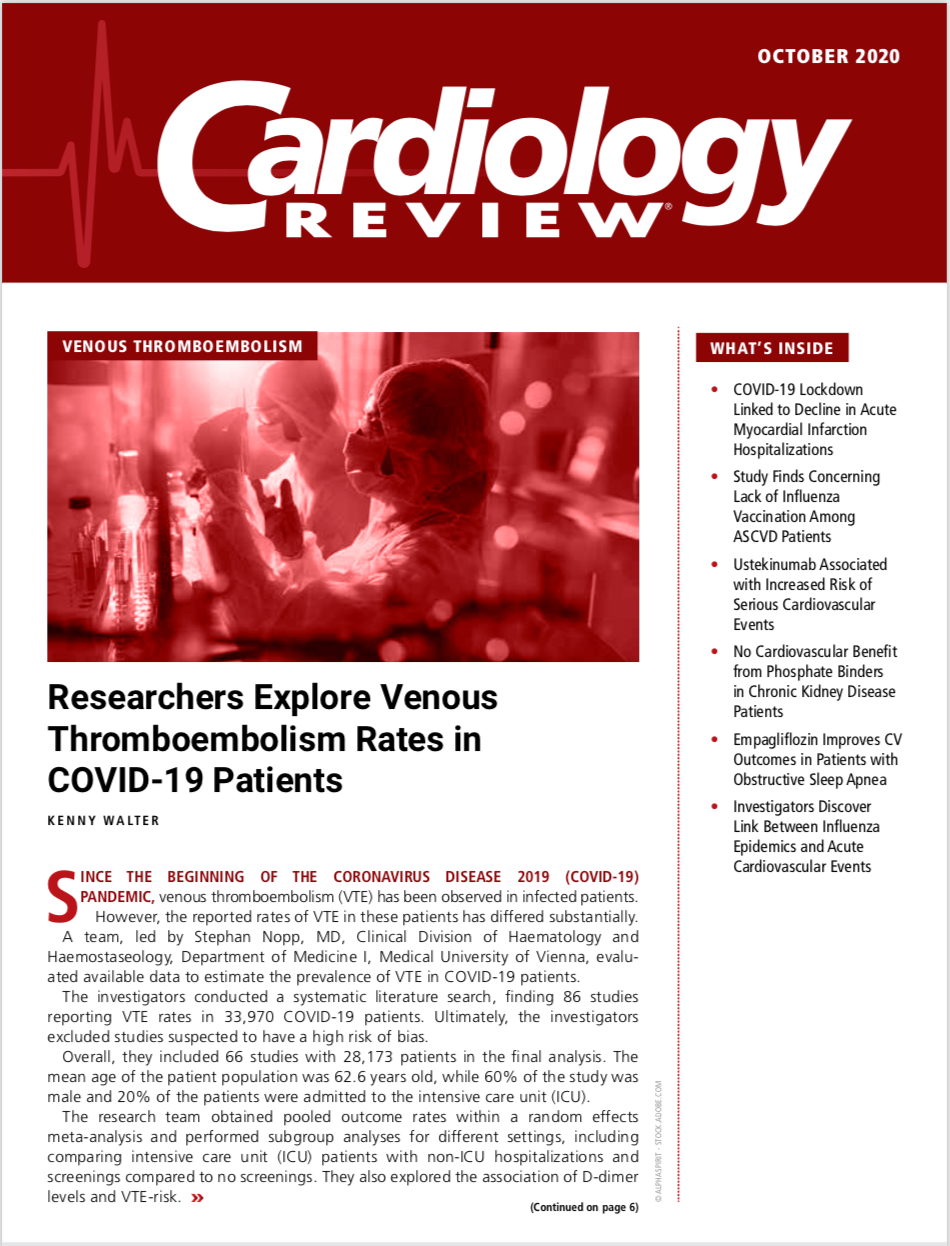Publication
Article
Cardiology Review® Online
Study Finds Concerning Lack of Influenza Vaccination Among ASCVD Patients
Author(s):
Individuals in vulnerable populations had a higher proportion and odds of not being vaccinated within the past year.
Gowtham Grandhi, MD, MPH

With the onset of influenza season, patients with morbidities, such as atherosclerotic cardiovascular disease (ASCVD), face an increased risk of mortality, severity of infection, and hospital readmissions. Influenza vaccinations, however, have been shown to reduce such risks in these types of patients.
New survey data collected from 2008-2016 reveals that nearly 1/3 of adults with ASCVD did not get vaccinated for influenza. Furthermore, this lack of vaccination is higher among vulnerable sociodemographic groups.
The study, which was led by Gowtham Grandhi, MD, MPH, of MedStar Union Memorial Hospital in Maryland, assessed the prevalence of adults with ASCVD who lacked the influenza vaccination during the past year. The investigators were also interested in analyzing the characteristics of this subpopulation, such as race/ethnicity, family income, insurance status, education level, and usual source of care.
To do this, they used data from the Pooled Medical Expenditure Panel Survey (MEPS) from which they included ASCVD adults ≥40 years.
The population’s ASCVD status was acquired through self-reporting and/or International Classification of Diseases, Ninth Revision diagnosis of coronary heart disease, peripheral heart disease, and/or cerebrovascular disease.
Furthermore, vaccination status was ascertained through self-reporting. An individual was considered having received vaccination if they had done so within 12 months prior to completing the survey.
All data was analyzed starting on April 2020.
Of all 131,881 adults assessed from the pooled data, 19,793 (15.7%) had ASCVD. The investigators noted this proportion corresponds to 22.8 million US adults annually.
As many as 7028 (32.7%) of the ASCVD population reported not having received their influenza vaccination within the past year, which represents 7.4 million adults.
This lack was significantly higher among adults aged 40-64 years (46.4% [OR, 2.32; 95% CI, 2.06-2.62]) as well as non-Hispanic Black (40.8% [OR, 1.24; 95% CI, 1.10-1.41]), and Hispanic (39.9% [OR, 1.03; 95% CI, 0.88-1.22]) individuals.
Proportions were also higher among those without a usual source of care (56.6% [OR, 2.00; 95% CI, 1.71-2.33]), uninsured individuals (64.9% [OR, 2.05; 95% CI, 1.63-2.58]), those of lower family income levels (35.1% [OR, 1.14; 95% CI, 1.01-1.27]), and those with a lower level of completed education (34.4% [OR, 1.25; 95% CI, 1.12-1.40]).
The investigators considered these subpopulations to be high-risk characteristics.
Further, among adults with ≥4 high-risk characteristics, 1171 (59.7% [OR, 6.06; 95% CI, 4.88-7.53]) were not vaccinated—compared with only 503 (18.9%) in those with 0 characteristics.
“While previous studies have shown significant disparities in influenza vaccination access and uptake, this is the first study to our knowledge that has assessed the prevalence of and socio- demographic disparities in vaccination among a nationally representative sample of adults with ASCVD,” the investigators noted.
Furthermore, they expressed concern over how these findings interplay with the recent emergence of coronavirus disease 2019 (COVID-19). Thus, Grandhi and colleagues stressed the importance of enhancing and making more accessible influenza vaccinations in at-risk patients with ASCVD.
The study, “Sociodemographic Disparities in Influenza Vaccination Among Adults With Atherosclerotic Cardiovascular Disease in the United States,” was published online in JAMA Cardiology.






